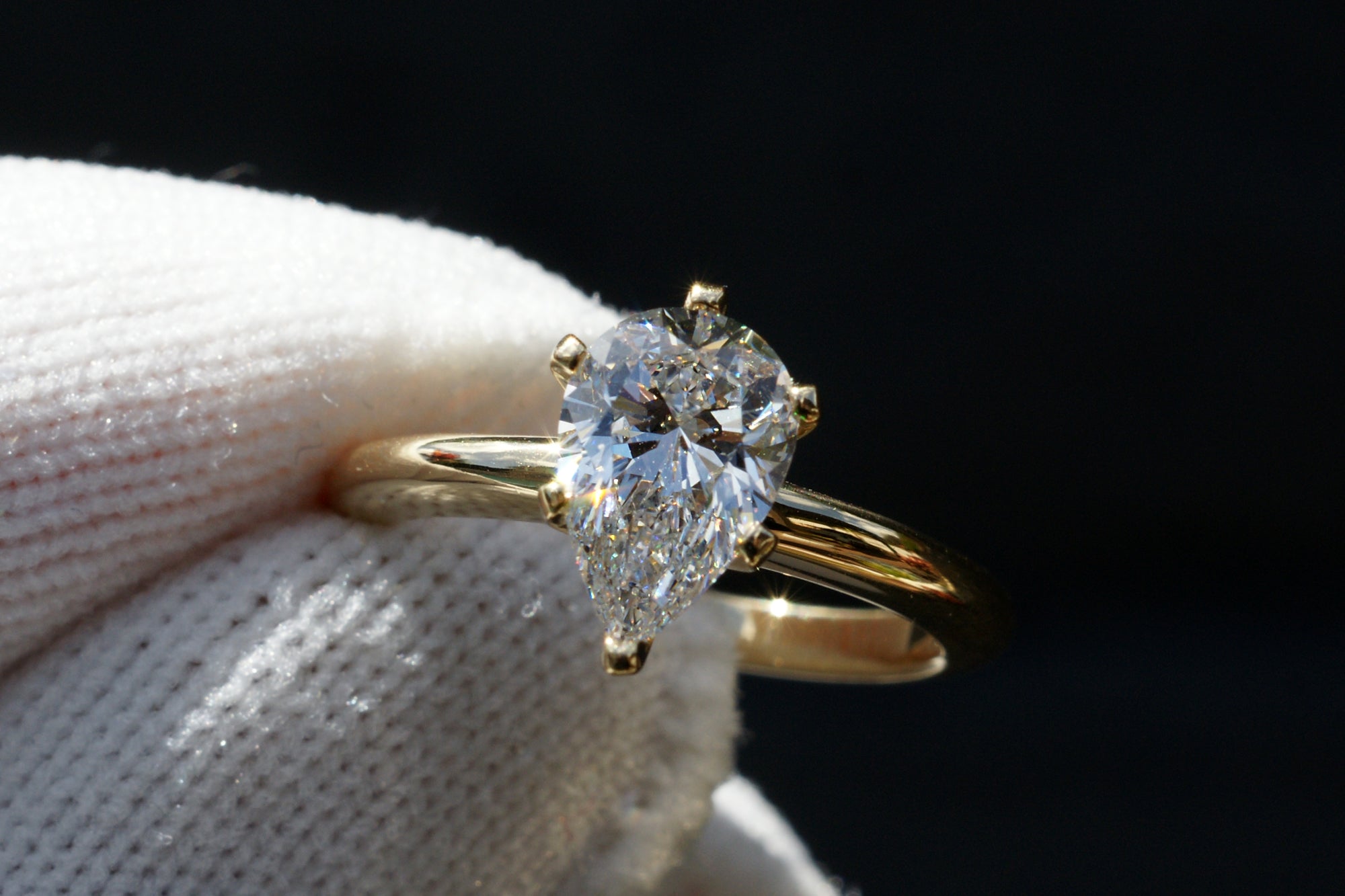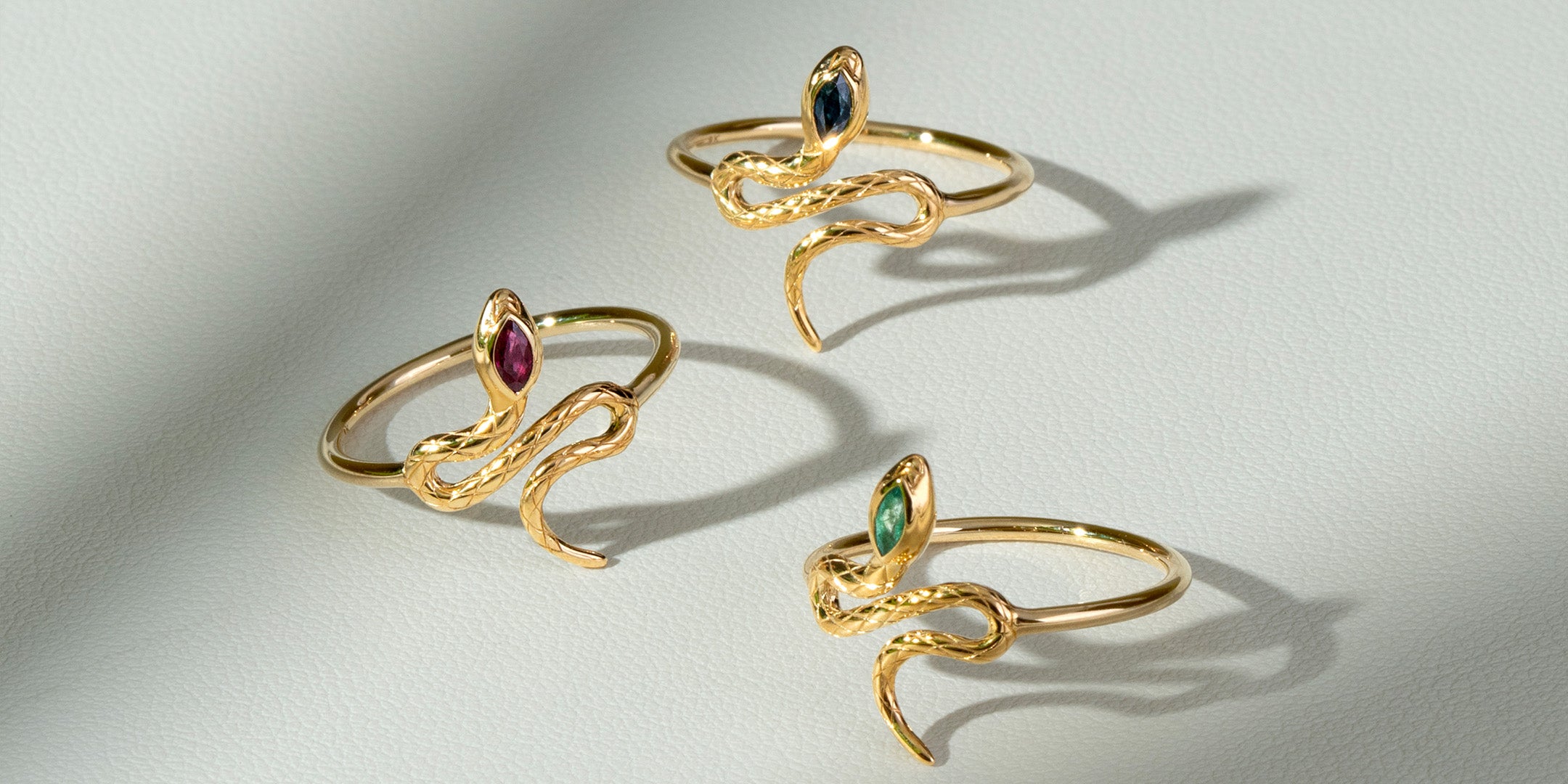When it comes to selecting an engagement ring or a piece of fine jewelry, the Pear Shape Diamond stands out as a remarkable option. Its unique combination of curves and angles makes it one of the most coveted diamond cuts in the world. The pear shape diamond, also known as the teardrop diamond, blends the elegance of the round brilliant cut with the sophistication of the marquise cut, resulting in a distinctive shape that radiates both brilliance and grace.
What is a Pear Shape Diamond?
A Forma Pera is a hybrid cut, merging a round brilliant cut on one end and a pointed, marquise-style end on the other. This distinctive design gives the pear shape diamond its signature teardrop appearance. The diamond typically has 58 facets, allowing it to reflect light brilliantly. The rounded end symbolizes infinity and wholeness, while the pointed tip represents focus and clarity. Together, these elements create a diamond that is both aesthetically pleasing and deeply symbolic, making the pear shape diamond a popular choice for engagement rings and special occasion jewelry.
The History of Pear Shape Diamonds
The pear shape diamond dates back to the 15th century, when it was first introduced by Flemish diamond cutter Lodewyk van Bercken. Van Bercken’s innovation in diamond cutting allowed for greater precision and brilliance, giving rise to the pear shape diamond we know today. Throughout history, this elegant diamond cut has been worn by royalty and celebrities alike, adding to its allure. The pear shape diamond has become a timeless symbol of beauty and refinement, favored by those who appreciate its unique blend of classic and modern design.
Why Choose a Pear Shape Diamond?
One of the most appealing aspects of the pear shape diamond is its versatility. Its elongated shape creates the illusion of a larger stone, making it a fantastic option for those seeking a bold, eye-catching piece. A pear shape diamond also flatters the wearer’s hand, creating a slimming effect on the fingers. Additionally, the pear shape diamond is known for its brilliance. With its 58 facets, this diamond cut offers a striking sparkle, rivaling even the popular round brilliant cut. Whether set in a solitaire, halo, or vintage setting, a pear shape diamond is sure to stand out.
Pear Shape Diamond: Symmetry and Proportions
When choosing a pear shape diamond, symmetry is crucial. A well-cut pear shape diamond should have a perfectly rounded end and a sharp, well-defined point. The two halves of the diamond should be mirror images of each other, ensuring balance and elegance. Another important consideration is the length-to-width ratio. Most pear shape diamonds have a ratio between 1.45 and 1.75, which provides the ideal balance between elegance and elongation. A pear shape diamond with poor symmetry or disproportionate sides may appear uneven or off-balance, detracting from its overall beauty.
Pear Shape Diamond Engagement Rings
Pear shape diamond engagement rings have become increasingly popular in recent years, especially among those who seek something different from the traditional round or princess cuts. The pear shape diamond offers a romantic, vintage-inspired look, while still feeling contemporary. Many brides-to-be are drawn to the diamond’s teardrop silhouette, which symbolizes tears of joy and love. The pear shape diamond can be worn with the point facing either toward or away from the wearer, each offering a distinct style. For those who appreciate individuality and elegance, a pear shape diamond engagement ring is a perfect choice.
Settings That Complement Pear Shape Diamonds
The pear shape diamond looks stunning in various settings, but certain designs accentuate its beauty more than others. A solitaire setting allows the pear shape diamond to take center stage, highlighting its brilliance and unique shape. A halo setting, where lab created diamonds encircle the pear shape diamond, adds extra sparkle and enhances its size. Vintage settings with intricate detailing also pair beautifully with pear shape diamonds, adding to their romantic charm. Whether you prefer a simple, modern design or a more ornate setting, a pear shape diamond will always make a statement.
Pear Shape Diamond: Pros and Cons
While the pear shape diamond offers numerous advantages, such as its unique shape, brilliant sparkle, and flattering appearance, there are also a few considerations to keep in mind. One potential downside is the “bow-tie” effect, a shadow that can appear in the center of the diamond due to light obstruction. However, a well-cut pear shape diamond can minimize this effect. Another consideration is the pointed tip, which is more susceptible to damage if not properly protected. A setting with prongs that shield the tip of the pear shape diamond can prevent chipping and ensure its longevity.
How to Care for Your Pear Shape Diamond
Like all diamonds, a pear shape diamond requires proper care to maintain its brilliance and luster. Regular cleaning with a soft brush and a mild solution of soap and water will keep your pear shape diamond sparkling. Additionally, it’s important to have your pear shape diamond inspected periodically by a jeweler to check for any damage or loose settings. With proper care and maintenance, your pear shape diamond will remain as stunning as the day you first wore it, symbolizing everlasting love and beauty.
Conclusion
In summary, the pear shape diamond is a captivating choice for those who seek a blend of classic elegance and modern flair. Its unique teardrop shape, brilliant sparkle, and versatility make it an ideal option for engagement rings and fine jewelry. Whether worn as a statement piece or as a symbol of love, a pear shape diamond is truly one-of-a-kind, offering timeless beauty that will never go out of style.





